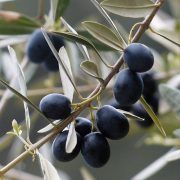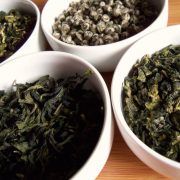Hydroxytyrosol is thought to be the main antioxidant compound in olive fruit, and it is believed to play a significant role in many of the health benefits attributed to olive oil. Previous research has linked the compound to cardiovascular benefits, typically reductions in LDL or “bad” cholesterol. Data has also suggested the compound may boost eye health and reduce the risk of macular degeneration.
Spanish researchers reported these results in the British Journal of Nutrition. Twenty-two healthy volunteers between 20 and 45 years of age and with a BMI between 18 and 33 kg/m2 were recruited. Volunteers were randomly assigned to receive 10 to 15 grams per day of hydroxytyrosol-enriched sunflower oil or non-enriched sunflower oil for three weeks. The former provided a daily hydroxytyrosol dose of between 45 and 50 mg. After the initial three week period, volunteers had two weeks of no intervention before crossing over to receive the other intervention.
Results showed no changes in total, LDL, or HDL-cholesterol between the groups. However, consumption of the hydroxytyrosol-enriched sunflower oil produced significant reductions in oxidized LDL from 79.8 units per liter at the start of the study to 64.1 U/l after three weeks, compared to an increase from 72.7 to 86.4 U/l during the control phase. Furthermore, the activity of arylesterase increased from 235.2 to 448.9 U/l during the hydroxytyrosol phase, compared with an increase from 204.1 to 310.3 U/l during the control phase.
The researchers reported that although hydroxytyrosol-enriched sunflower oil did not significantly reduce LDL-cholesterol or increase HDL-cholesterol, it acted as a functional food by increasing arylesterase activity and reducing oxidized LDL. Oxidized LDL is believed to be a major player in promoting atherosclerosis (the build-up of fatty plaques in arteries) and general cardiovascular disease. Based on these results, dietary sources of hydroxytyrosol appear to be capable of reducing certain risk factors associated with coronary artery disease.
Researchers at Brigham and Women’s Hospital in Boston studied 12 healthy adults who were randomized to read either a light-emitting eBook or a printed book in dim room light. The participants in each group read for 4 hours prior to bedtime for 5 consecutive evenings. At the end of the 5 days, the subjects switched their assignments. Blood samples were taken during the study and evaluated for melatonin levels. The researchers also documented sleep latency, time and efficiency using polysomnography, a diagnostic tool used in sleep studies.
The reading of eBooks before sleep was associated with a longer time needed to fall asleep and less rapid eye movement (REM) in comparison to reading a printed book. Printed book reading resulted in no suppression of melatonin, but eBook readers experienced an average melatonin suppression of over 55%. In addition, compared to the reading of printed books, the onset of melatonin release in response to dim light occurred 1.5 hours later the day following reading of an eBook. Individuals reading the e-Books also reported being more tired and taking longer to become alert the next morning.
Unlike natural light, electronic devices emit a short-wavelength-enriched light that is more concentrated in blue light. These results demonstrate that evening exposure to light-emitting electronics such as eBooks may delay the circadian clock and suppress the release of melatonin, and this may have a negative impact on sleep, performance, health, and safety.
Thanks for sharing! Entering your USANA ID number creates a unique URL, which allows you to receive credit on referrals.
Here’s how it works: When the link is clicked, a cookie (if allowed) is created. Shopping buttons on applicable product pages will appear to the referred user. A click on these buttons passes your referral information to USANA’s Shopping Cart, tying purchases made on cookie-containing devices to you for 30 days. In addition, if a person clicks on this unique URL and then later visits USANA.com and makes a purchase (within 30 days), you receive credit for the sale.
Enter your ID now for these enhanced features.







